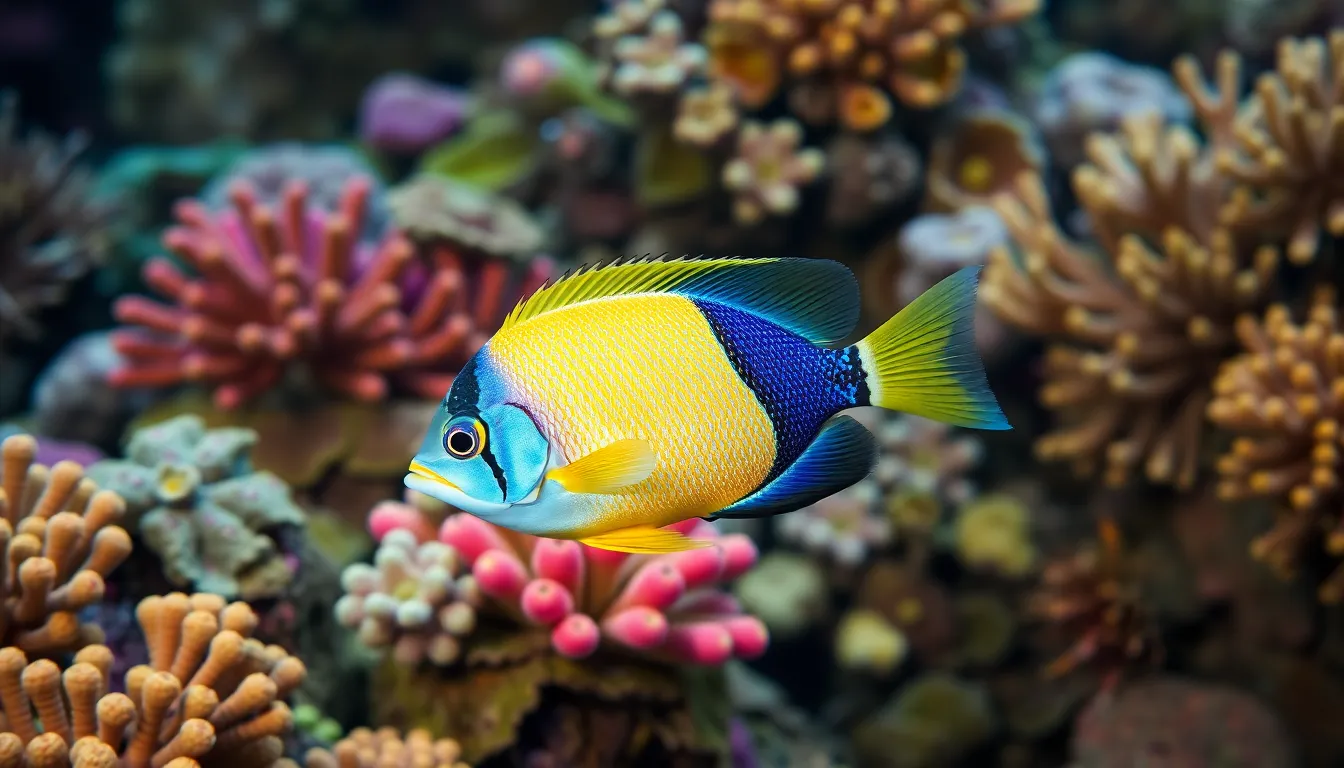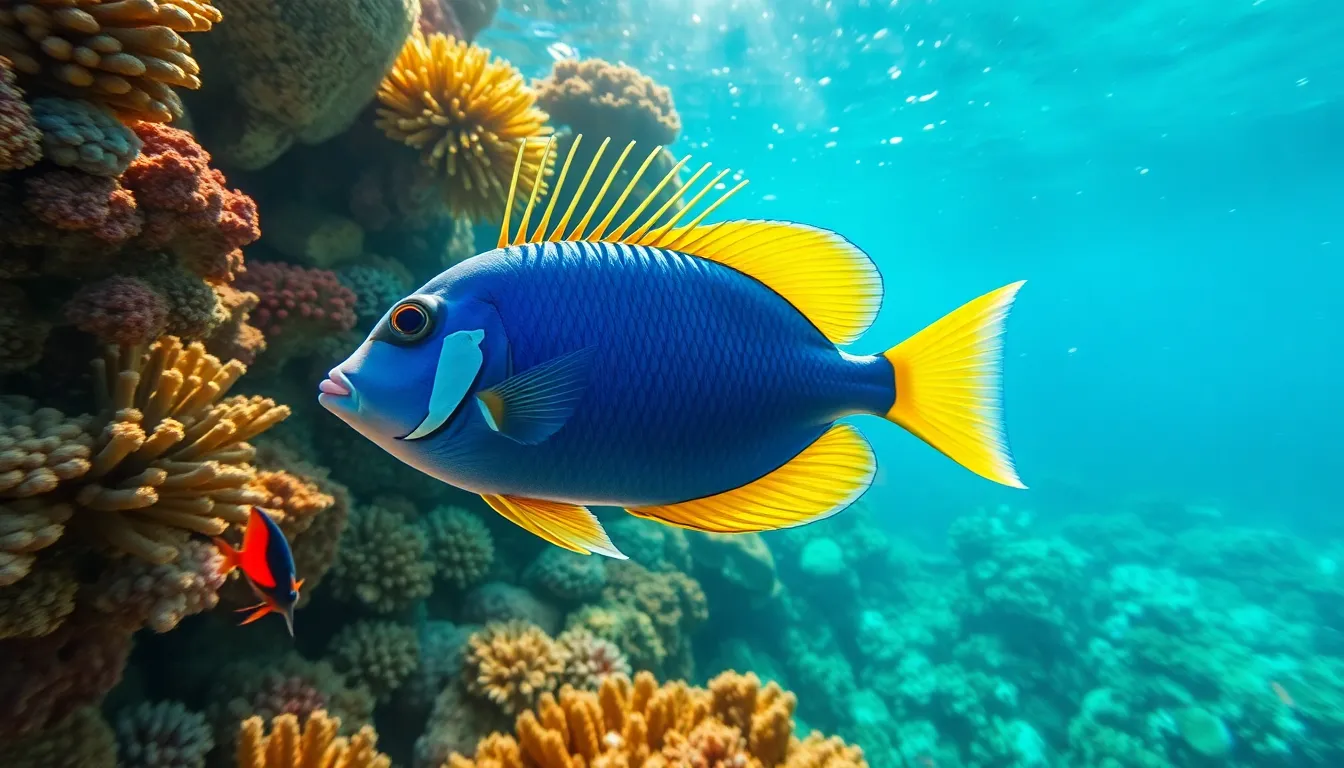In the quirky world of marine life, few creatures capture attention like the emidiotris. This fascinating little fish isn’t just another colorful resident of the ocean; it’s a true underwater superstar with a personality that could light up even the darkest depths. With its vibrant hues and playful antics, the emidiotris has become a favorite among aquarists and ocean enthusiasts alike.
Table of Contents
ToggleOverview of Emidiotris
Emidiotris stands out in the marine world due to its striking colors and unique patterns. This fish belongs to a diverse range of species, each showcasing vibrant hues that attract attention. Known for its active behavior, Emidiotris thrives in dynamic aquatic environments.
Primarily found in coral reefs, this fish prefers shallow waters where it can navigate through structures. It often utilizes crevices for shelter, making it a master of camouflage. Many aquarists appreciate Emidiotris for its playful nature, which adds liveliness to home aquariums.
Diet plays a crucial role in its health. Emidiotris typically feeds on small crustaceans and plankton, reflecting its carnivorous diet. Proper nutrition enhances its coloration and overall vigor.
Breeding behavior shows fascinating traits. Males exhibit bright colors to attract females during the mating season. After fertilization, females lay eggs in safe areas, ensuring the next generation can thrive.
Awareness of environmental factors is important for maintaining Emidiotris populations. Habitat loss due to pollution and climate change poses risks. Conservation efforts aim to protect their natural habitats, promoting species sustainability.
Notably, Emidiotris has become a popular choice among community aquarists. Enthusiasts often share care tips and breeding experiences online, fostering a community around this captivating fish. Keeping these creatures requires knowledge and commitment, ensuring they flourish in captivity.
Characteristics of Emidiotris

Emidiotris boasts distinct characteristics that make it a remarkable species in aquatic ecosystems. The fish is recognized for its vibrant coloration and engaging behavior.
Physical Features
Emidiotris exhibits a slender body, which often displays brilliant hues ranging from bright blues to vivid yellows. These colors serve the dual purpose of attracting mates and camouflaging within their surroundings. Its fins are usually elongated, enhancing its agility in swift movements. Unique patterns across its scales add to its allure, making each specimen visually captivating. Notably, the size of emidiotris varies, with some species growing up to 5 inches long, adding to their appeal for aquarists.
Habitat and Distribution
Emidiotris thrives in diverse marine environments, primarily preferring coral reefs and shallow lagoons. Found in warm waters across the Indo-Pacific region, it inhabits areas like the Red Sea and the Great Barrier Reef. Shelter in crevices allows emidiotris to evade predators while foraging for food. The fish often resides near rocky substrates where small crustaceans and plankton are abundant. This dynamic habitat supports their vibrant health and colorful appearance, crucial for their survival in the wild.
Behavior and Ecology
Emidiotris exhibits unique behaviors and ecological interactions that contribute to its appeal in marine ecosystems. Its adaptive strategies enhance survival and reproduction in vibrant underwater environments.
Feeding Habits
Emidiotris primarily feeds on small crustaceans and plankton available in its habitat. It employs a foraging technique that involves darting quickly to catch prey hiding in crevices. Daily feeding cycles maximize intake during times of high prey availability. Adaptations in its mouth structure facilitate efficient feeding on tiny organisms. This carnivorous diet plays a vital role in maintaining its health and vibrant coloration.
Reproductive Patterns
Emidiotris displays fascinating reproductive behaviors marked by vibrant displays. During courtship, males showcase their brilliant colors to attract females effectively. Nesting typically occurs in shallow habitats where they can safeguard their eggs. After laying eggs, females leave the area, while males remain to guard the nest until hatching. This racing display of colors emphasizes the importance of visual signaling in their mating rituals.
Significance in Ecosystems
Emidiotris plays a pivotal role in coral reef ecosystems. By feeding on small crustaceans and plankton, this fish helps maintain the balance of marine food webs. Predation on these organisms controls their populations, preventing overgrowth that could disrupt coral health.
Nutrient cycling is another crucial function of emidiotris. As it forages, it contributes organic materials to the reef environment. These contributions enhance nutrient availability for symbiotic algae, essential for coral survival and growth.
The species also enhances biodiversity. Emidiotris provides habitats for various organisms within its crevices, promoting a diverse community of marine life. Increased diversity strengthens ecosystem resilience, as different species respond to environmental changes in various ways.
Additionally, emidiotris serves as an indicator species. Its health reflects underlying environmental conditions, alerting scientists to shifts in ecosystem health. A decline in their population may signal broader ecological issues, such as pollution or climate change impacts.
Lastly, emidiotris engages in mutualistic relationships. This fish often shares its environment with cleaner wrasses, benefiting from parasite removal while providing a safe habitat for these small fish. Such interactions illustrate the interconnectedness of species within their ecosystems, highlighting emidiotris’s integral role in maintaining marine biodiversity.
Conservation Status of Emidiotris
The conservation status of emidiotris reflects ongoing concerns regarding its natural habitats. Habitat loss poses a significant threat due to pollution and climate change. Coral reef degradation negatively impacts the populations of this species, as these environments are crucial for their survival.
Various organizations monitor emidiotris populations to assess their health. Reports indicate declining numbers in certain regions, primarily due to overfishing and habitat destruction. Implementing marine protected areas can help preserve their habitats and promote recovery. These areas offer refuge, allowing emidiotris populations to stabilize and thrive.
Educational initiatives raise awareness about the importance of emidiotris and its role in marine ecosystems. Community efforts focus on sustainable practices that include responsible aquarium trade and environmental stewardship. Engaging with local communities enhances cooperation in conservation endeavors, fostering a sense of responsibility for preserving marine biodiversity.
Research continues to explore the specific threats faced by emidiotris. Scientists emphasize the need for distinctive conservation strategies tailored to its ecological requirements. By protecting these fish, ecosystems benefit from the balance they maintain within coral reefs. As an indicator species, emidiotris serves as a barometer for the health of its environment.
Monitoring efforts aim to ensure populations remain viable. Initial steps involve assessing genetic diversity to understand resilience against environmental changes. Enhanced conservation measures could mitigate the risks posed by climate change, ensuring emidiotris persists in its natural habitat. Such initiatives underscore the importance of safeguarding not only this vibrant fish but also the intricate ecosystems it inhabits.
Emidiotris is more than just a visually stunning fish; it plays a vital role in maintaining the health of coral reef ecosystems. Its unique behaviors and ecological interactions highlight its importance within marine environments. As conservation efforts gain momentum, awareness of emidiotris’s plight becomes essential for ensuring its survival.
Aquarists and enthusiasts can contribute to this cause by promoting sustainable practices and supporting initiatives aimed at protecting their habitats. Emidiotris serves as a reminder of the delicate balance within marine ecosystems and the collective responsibility to preserve the beauty and diversity of our oceans.



